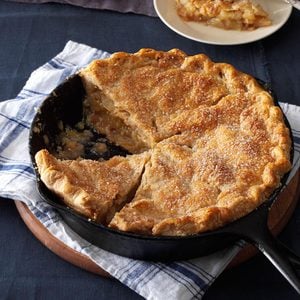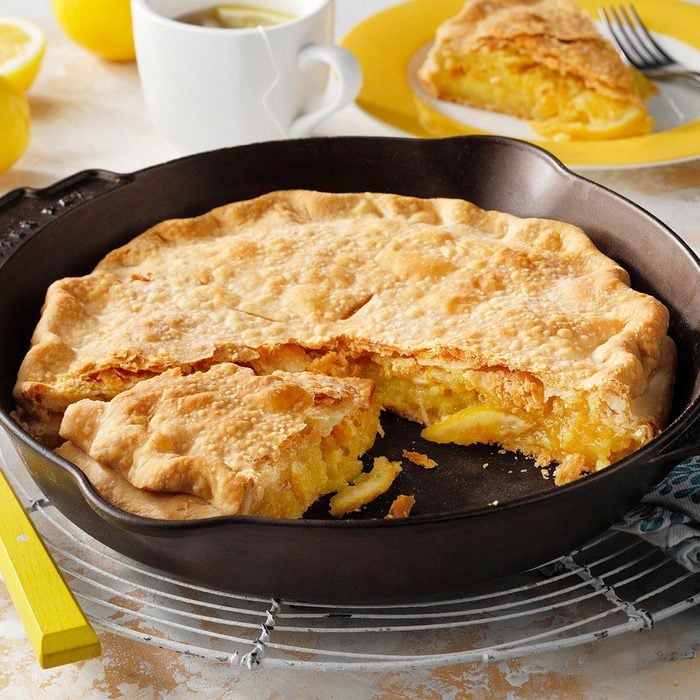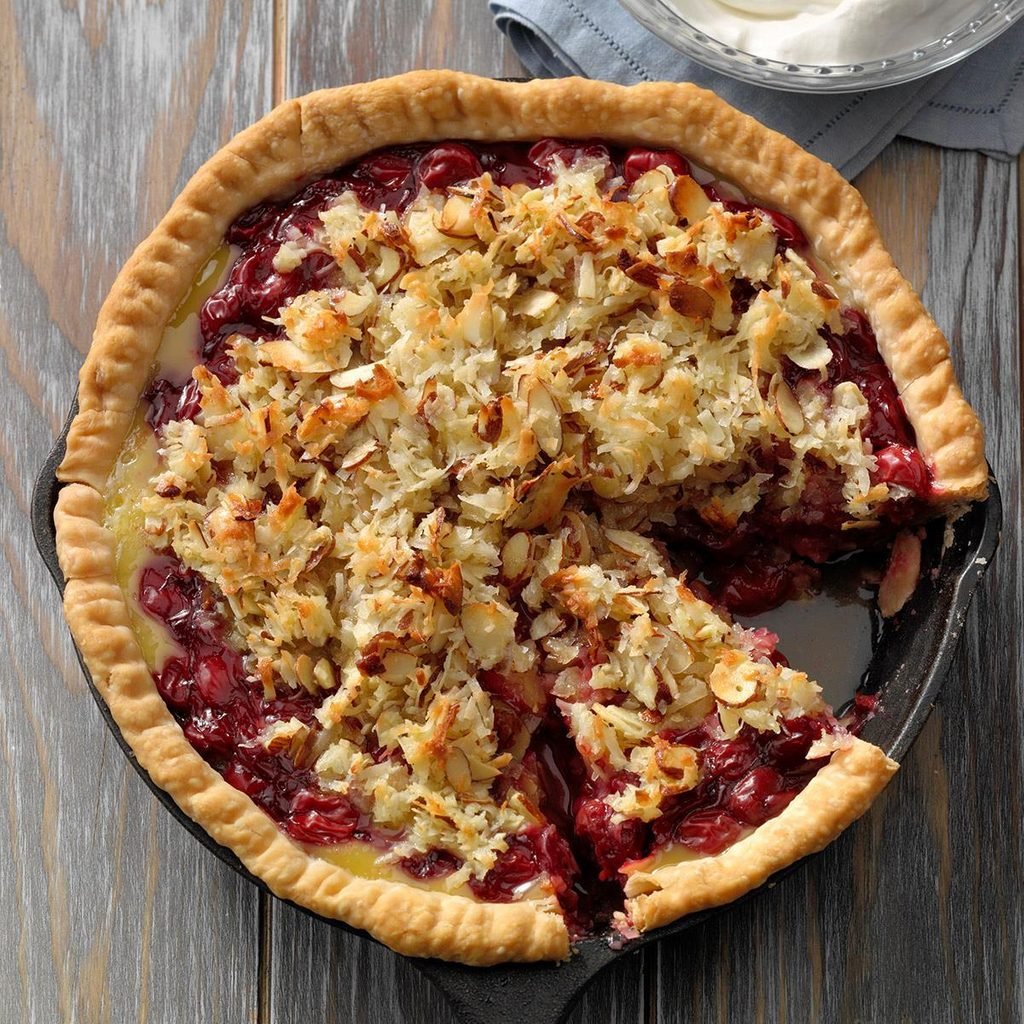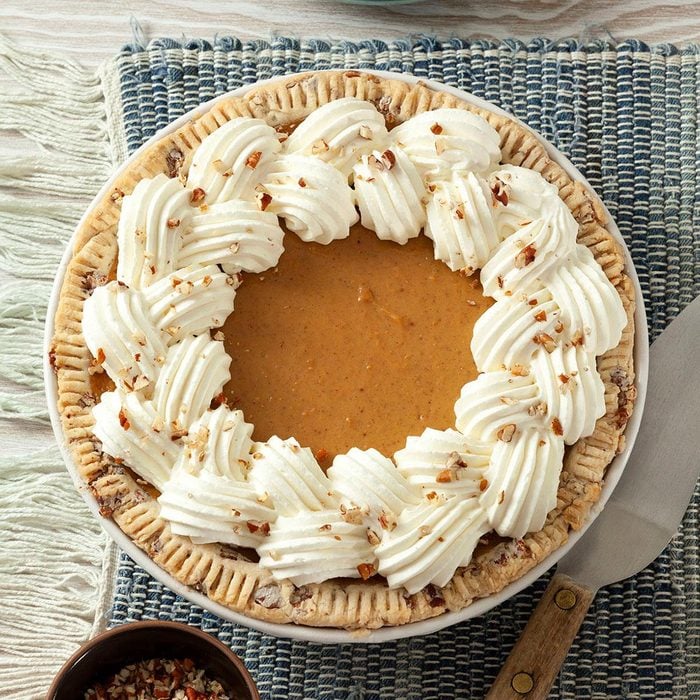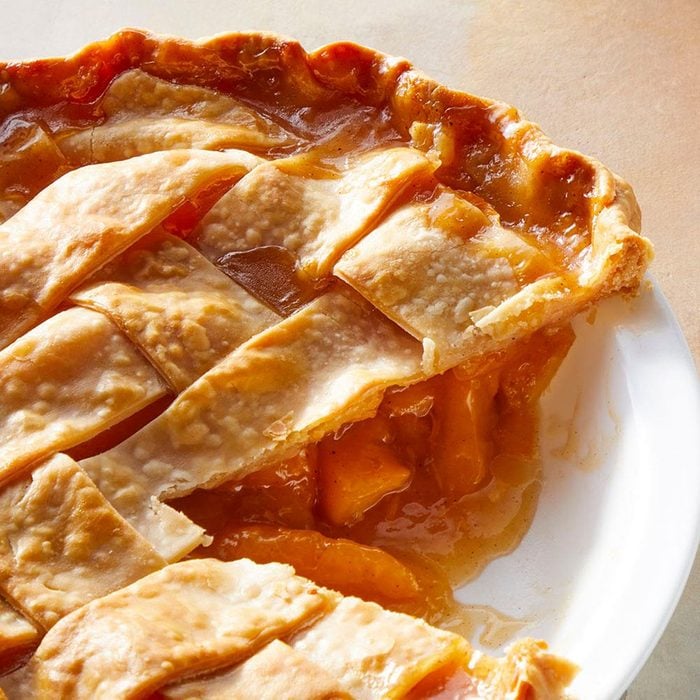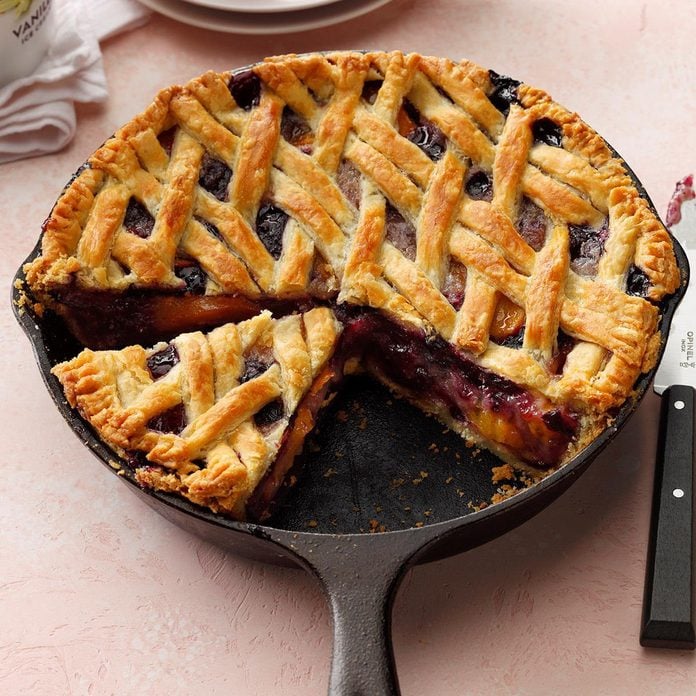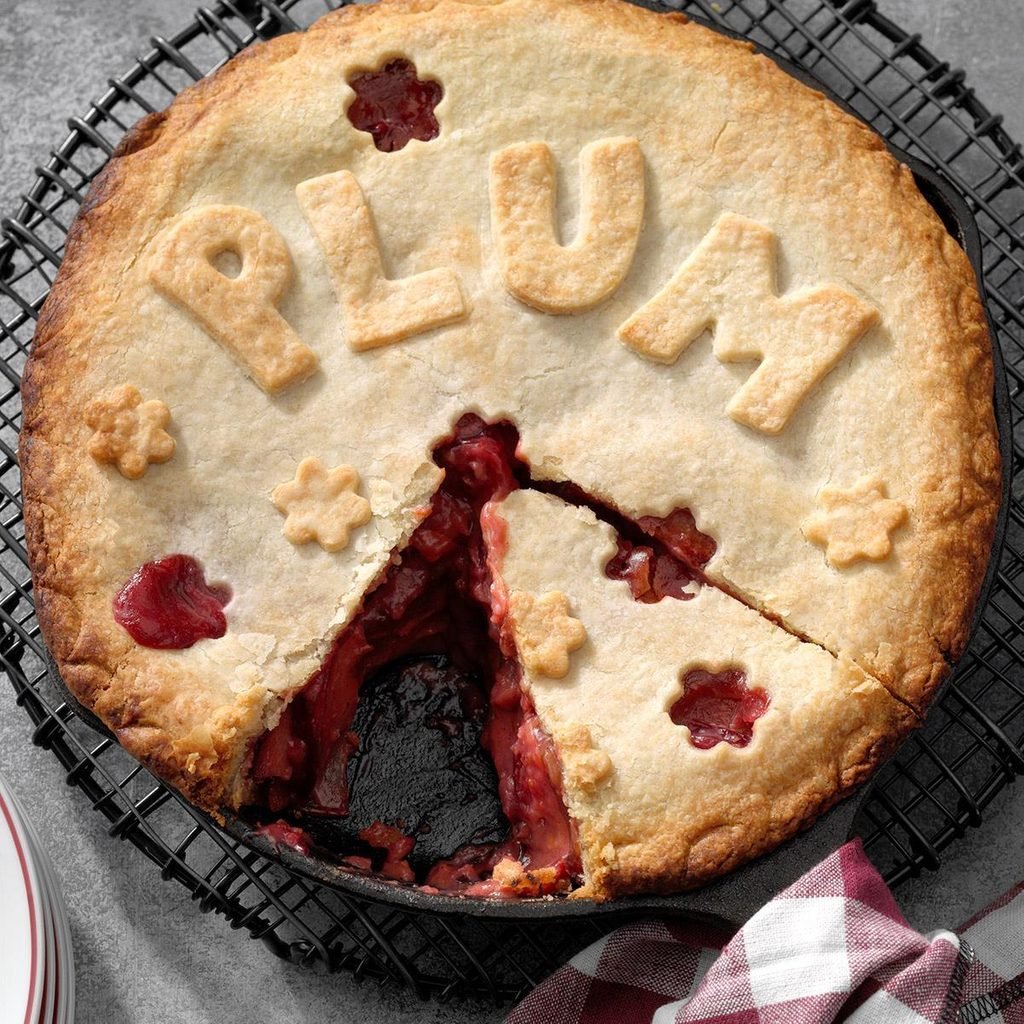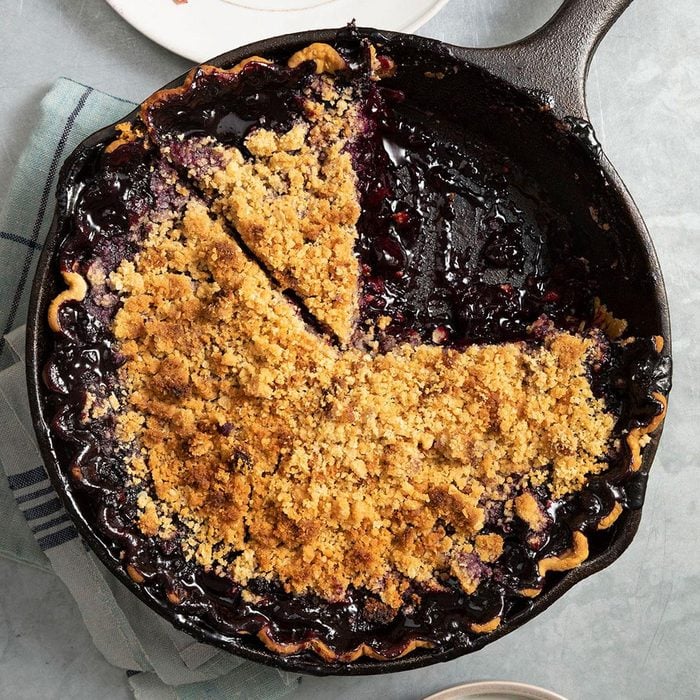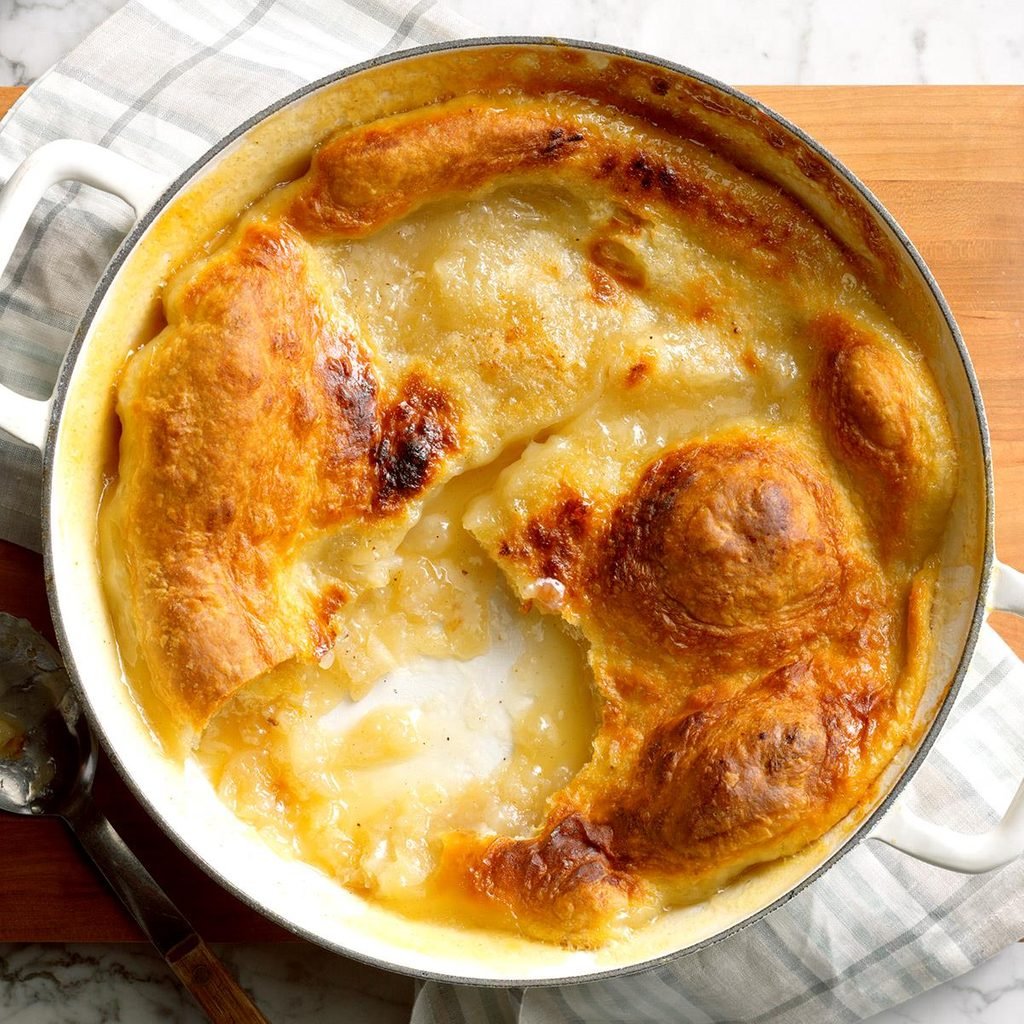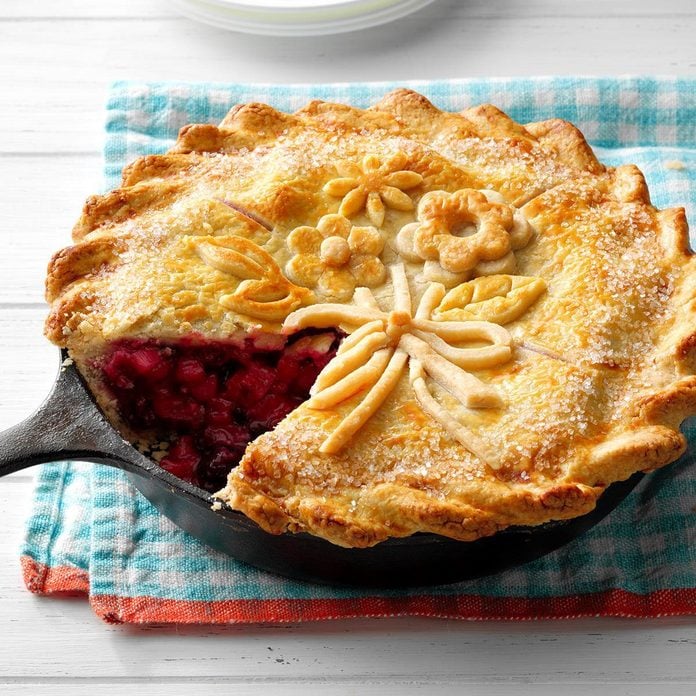When you're craving a rustic, golden pie that's flaky and delicious, reach for your trusty cast-iron skillet!
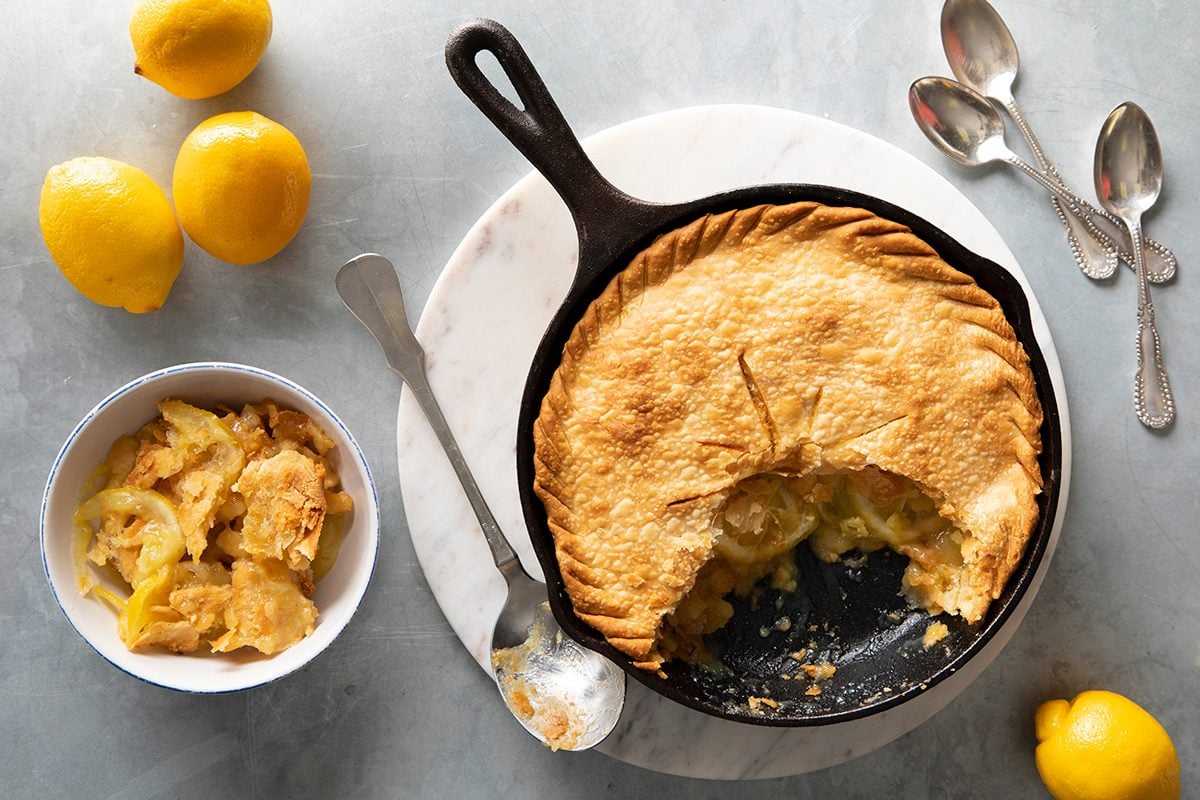
The One Thing You’re Not Doing with Your Cast-Iron Skillet (Yet!)

A cast-iron skillet is the ultimate kitchen multitasker. I reach for it when I’m craving fried chicken that crackles, toasty grilled sandwiches and even cheesy deep-dish pizzas. But one of my favorite treats to make in cast iron is pie. It’s a surprisingly simple method that yields oh-so-delicious results. Here’s how to bake pie in a cast-iron skillet.
Master cast iron cooking with our guide.
Why Use Cast Iron for Baking?
Cast iron is great for baking because it retains heat and conducts it evenly. Hot spots can occur with glass and ceramic pie plates, but cast iron will give you an even crust, no spots in sight!
It’s also more fun to dig into a cast iron dessert. While classic pie pans are just over an inch deep, your skillet is at least two inches deep. There’s nothing more gratifying than diving in for a big wedge of pie like this Shaker lemon pie. Trust me, your guests will agree.
Make sure you take proper care of your cast iron. Here’s how.
What Pies Can You Bake in a Cast-Iron Skillet?
Almost any pie can be converted to a skillet pie. (But save the icebox pie for your delicate ceramic dishes.) A standard pie pan is a 9-inch round, so your best bet for skillet pie success is with a 9-inch cast-iron skillet. A 10-inch skillet will also work—just make sure you have enough crust to cover the bottom and sides. Any larger and your bake times will be off, resulting in burnt crust or underdone filling.
How to Layer Crust into a Cast-Iron Skillet
Speaking of crust, I mentioned before that cast-iron skillets are deeper than a typical pie dish, meaning you’ll need more crust to cover the bottom and sides of the pie. Our Test Kitchen’s best advice is to make a batch-and-a-half of your go-to pie crust.
Then roll out about 70% of your crust for the bottom and place it in the skillet, being sure that the crust comes up about three-quarters up the sides. Then, cut off any excess and combine that with the remaining 30% for your top crust.
The final crust adjustment comes when placing the top over the filling. To avoid burning, make sure all of the crust stays inside the skillet, including any fancy pie crust designs.
How to Bake Pies in Cast-Iron
When it comes to baking, place your skillet on the very bottom rack of the oven. Being closer to the heat source allows the cast iron to absorb it easily and bake your pie beautifully. Bake times and temperatures will remain the same as the original, but make sure to check on your pie and pull it when the top crust is golden brown.
Serve the pie in the skillet on a pretty trivet for a beautiful, rustic dessert. I’m getting major Joanna Gaines vibes!




















